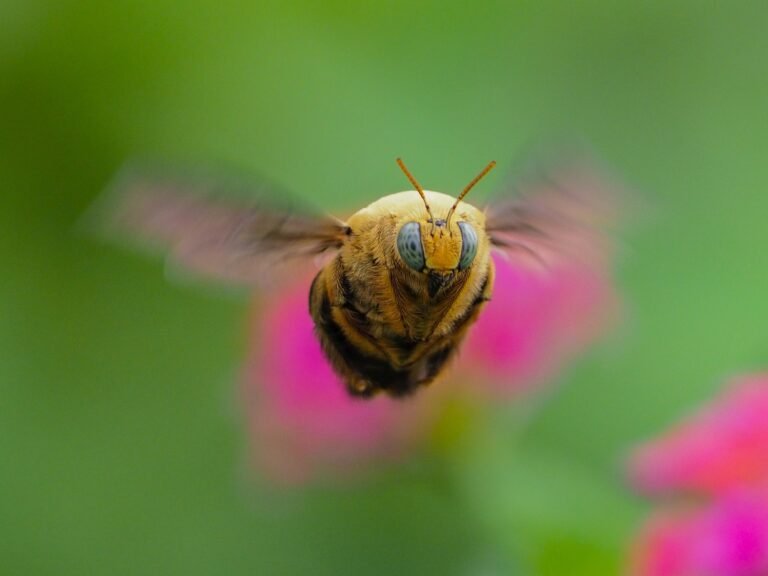Effective Carpenter Bee Control Strategies for Atlanta Homes
Effective Carpenter Bee Control and Removal Solutions in Atlanta
Carpenter bees cause significant problems for homeowners in Atlanta. This guide explains effective carpenter bee control and removal solutions in Atlanta, presenting actionable strategies and eco-friendly options. The content outlines the nature of carpenter bees, residential property damage, and seasonal considerations. Readers will find simple solutions to protect their property and minimize repair expenses.
Understanding Carpenter Bees and Their Impact in Atlanta
Carpenter bees leave visible signs, from burrows in wood to activity resembling a woodpecker‘s frequent tapping on varnish-treated surfaces. Identification of these bees helps homeowners detect early signs of infestation around furniture and structures, enabling informed decisions to control the pest before it can fly and cause further damage.
Identification of Carpenter Bees
Carpenter bees are identifiable by their distinct appearance which includes a robust abdomen and black and yellow markings, making them different from a yellowjacket. Observations from the university of kentucky research help homeowners understand the bee‘s typical size and nesting behavior, laying the foundation for timely action using insecticide if necessary.
Experts note that a beekeeper can distinguish carpenter bees by their sturdy form and solitary habits, which differ from social insects such as yellowjackets. Practical field studies confirm that monitoring the abdomen and flight patterns aids in early detection and effective control measures, preventing damage to wooden structures.
Signs of Infestation in Homes
Homeowners may observe fine dust and weakened wood near a tree or along the sides of a construction site, which can indicate the presence of nests. An unusual odor in a crawl space or adjacent to outdoor structures also suggests that carpenter bees have established their tunnels.
Experts advise monitoring wooden frameworks for disturbed surfaces as early signs of infestation. Subtle dust accumulation around a tree or near areas undergoing construction, combined with a slight odor in a crawl space, serves as practical evidence that carpenter bees have begun their nesting activities.
Effective Strategies for Carpenter Bee Control
This section outlines preventive measures for Atlanta residents, details on effective carpenter bee prevention, and removal. It reviews best practices for handling these bees compared to approaches used for yellow jackets. This guide also contrasts professional services versus do-it-yourself methods, offering insight similar to pest control strategies used for managing a rat problem in alabama.
Preventive Measures for Atlanta Residents
Atlanta residents can prevent carpenterbee infestations by addressing entry points early. Homeowners should inspect eaves, siding, and other vulnerable areas for signs of the eastern carpenter bee and related insect activity. Targeted aerosol applications of approved treatments can reduce swarming and deter the bees from establishing new nesting sites.
Local experts advise routine maintenance of outdoor spaces to minimize potential habitats for carpenter bees. Regular inspections of the eaves and nearby wooden structures enable early detection of eastern carpenter bee activity, while prompt repair and sealing prevent the insect from gaining access to indoor environments and initiating swarming behavior.
Best Practices for Carpenter Bee Removal
In Atlanta, experts use proven bee control techniques to remove carpenter bees effectively, ensuring that infestations do not become a larger pest issue. The removal process includes careful assessments that consider the bees’ hibernation periods and potential risks posed by overlapping species, such as hornets, ensuring a targeted approach that minimizes disruption to the property and its occupants.
Specialists incorporate modern methods, sometimes even integrating technology like javascript-based tracking systems, to monitor and manage carpenterbee activity accurately. This approach, honed through field experience, provides actionable insights and reliable bee control measures that address common concerns and offer a practical alternative to traditional removal methods.
Professional vs. DIY Methods
Carpenterbee management in Atlanta sees both professional and DIY methods offer valuable benefits, with professional services providing targeted treatments that incorporate the use of insect repellent and precise application techniques similar to handling a delicate bottle of honey, while also considering termite behaviors to avoid secondary infestations. Professionals often ensure that pet safety is maintained during interventions, making them a trusted option for homeowners concerned about thorough and safe removal practices.
DIY enthusiasts can achieve effective results by following detailed guides and using approved products that resemble a carefully measured bottle of insect repellent, paired with holistic monitoring strategies comparable to managing a pet‘s environment. Practical insights from field studies offer actionable tips that help homeowners prevent further damage, similar to controlling termite risks, enabling self-reliance while addressing carpenterbee concerns effectively.
Residential Property Damage Caused by Carpenter Bees
Carpenter bees damage wooden structures in metro atlanta, leaving signs like disrupted cells and larva remnants. Homeowners should assess damage severity compared to issues caused by wasps. Detailed insights into common damage types and evaluation methods help guide decisions and may indicate when a pest control service is needed.
Types of Damage Commonly Seen
Damage caused by these insects manifests in precise tunnels and weakened wood often found in residential properties, where the species‘ boring can create gaps similar in texture to decayed putty. Observations indicate that routine carpenterbee treatment promptly followed by caulk application can prevent further deterioration and deter additional infestations.
Field experts note that areas with signs of small, discreet holes often attract secondary pests such as a mouse, complicating the situation for homeowners. Implementing effective carpenterbee treatment alongside timely maintenance measures can secure the structure and minimize extensive repair needs.
Assessing the Severity of Damage
Experts assess the severity of carpenter bee damage by closely examining key areas such as the attic and external wooden structures. They inspect for visible tunnels that indicate extensive nesting, which may lead to further infestation and even attract a potential rodent issue, urging the timely use of professional removal services.
Field specialists recommend a detailed evaluation to differentiate minor disturbances from significant damage that could compromise property integrity. The assessment involves noting the extent of the tunnel network in wooden surfaces and verifying if extra measures, like removal services, are necessary to minimize further risks.
Eco-Friendly Solutions for Carpenter Bee Issues
Using natural repellents such as citronella oil and humane traps, Atlanta residents can manage carpenter bees around structural holes without high toxicity. Safe insecticides offer effective wildlifecontrol while protecting nearby fruit trees. These eco-friendly methods add practical insights and proven techniques to prevent bee-related damage.
Natural Repellents and Traps
Experts have found that natural repellents mixed with sawdust can help reduce carpenter bee infestation in Atlanta areas, offering an eco-friendly alternative to harsh pesticide treatments. Testing shows that combining organic ingredients with targeted traps successfully minimizes the risk of secondary issues, such as wasp complications, while also supporting animalremoval efforts when bees infringe on property boundaries.
Field specialists recommend employing humane traps in areas prone to carpenterbee activity as part of an overall eco-friendly strategy. This approach not only limits the spread of infestation but also benefits residents seeking alternatives to conventional pesticide solutions, ensuring that local ecosystems remain balanced while managing pest issues effectively.
Safe Insecticides for Carpenter Bees
Experts recommend safe insecticides for mitigating carpenterbee activity without compromising outdoor environments. These products tackle the formation of a bee nest and reduce noise disturbances associated with carpenterbee flight, offering a solution that a homeowner can purchase with confidence using a credit card. The approach enables a carpenter to manage infestations effectively while preserving the integrity of wooden structures.
Practitioners observe that these non-toxic treatments decrease the presence of a carpenterbee and prevent further nesting issues. Field trials show that reduced noise levels and a safe chemical profile make these insecticides a dependable choice for property management, ensuring that both natural habitats and structural elements remain secure.
Seasonal Considerations for Carpenter Bee Control
Target seasonal timing and carpenterbee behavior patterns for effective carpenter bee removal in Atlanta. The discussion highlights foraging habits, optimal timing for spray applications, and safe drill procedures while noting potential ant activity. Such practical insights help homeowners schedule their control efforts proficiently throughout the year.
Understanding Carpenter Bee Behavior by Season
Seasonal shifts influence carpenterbee behavior, prompting changes in their foraging patterns and nesting activities. Field observations reveal that during warmer months, bees actively seek pollen on a nearby lawn, and their robust thorax design sets them apart from bumble bees, aiding precise identification for effective honeybeeremoval efforts.
As temperatures drop, carpenter bees reduce outdoor activity, making it an ideal period for control measures. Experts note that reduced activity helps focus on strategic intervention, ensuring that any interference with bumble bees does not disrupt the ecosystem while maintaining safe zones for honeybeeremoval and careful management of pollen sources.
Timing Your Control Efforts
When scheduling control efforts, experts emphasize monitoring seasonal activity while noting signs similar to a bumblebee’s flight patterns near citrus trees, which helps distinguish carpenter bees from other insects. Their observations reveal that early spring offers the best window to act before a stain appears on wooden surfaces, indicating early nesting activity.
Field specialists recommend timing interventions when carpenter bees show reduced activity, making it easier to address infestations that may attract a raccoon or other pests. Practical experience shows that this seasonal approach allows residents to safeguard their plant installations and wooden structures effectively, ensuring reliable outcomes in bee management.
Importance of Regular Maintenance and Follow-Up
Scheduled inspections and timely treatments support effective control measures for carpenter bees in Atlanta. Regular maintenance monitors hymenoptera activity and burrow formation, equipping Georgia homeowners with long-term strategies for prevention. Practical approaches include almond-based deterrents to minimize damage and ensure continuous control of these insects.
Scheduling Inspections and Treatments
Homeowners in Atlanta benefit from routine inspections that follow entomology guidelines to ensure an early response to carpenterbeepests. Experts advise scheduling treatments after the overwintering phase to prevent damage to lumber and other structures, and they often reference satisfactory practices observed in areas like Athens.
Skilled technicians monitor the seasonal behavior of these insects to identify new nesting areas and advise on timely treatments. Their field experience helps reveal the best periods to intervene, reducing the risk of carpenter bees establishing persistent infestations and causing long-term damage.
Long-Term Strategies for Prevention
Experts stress the need for routine wood inspections around a property to catch early carpenterbee signs, as consistent maintenance helps reduce long-term damage. They advise checking areas near the chimney and other vulnerable structures, suggesting that both wildliferemoval and monitoring for unexpected visitors like squirrels or birds can prevent further complications.
Field specialists recommend integrated approaches that combine regular cleaning and sealing with periodic evaluations of potential entry points. These prevention methods support a proactive stance, ensuring that properties remain safe and well-maintained while addressing concerns typically raised during wildliferemoval or bird management processes.
Effective Carpenter Bee Control for Atlanta Homes
Atlanta residents must actively address carpenterbee infestations with effective control and removal solutions. Homeowners can safeguard wooden structures by regularly inspecting, sealing, and treating potential entry points. Field-tested methods and tailored treatments empower individuals to minimize damage and prevent further nests. These practical measures ensure that properties remain secure while reducing risks associated with secondary pest issues.




